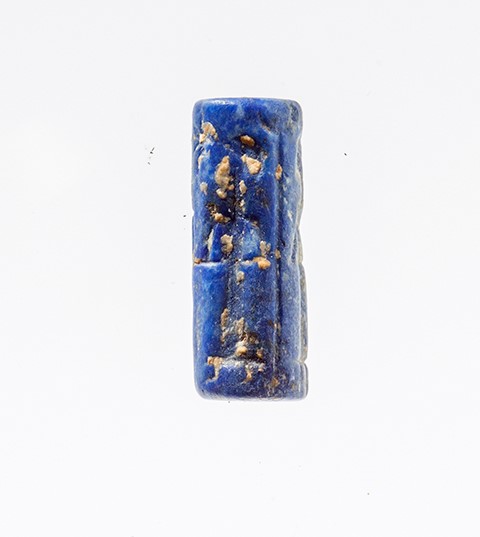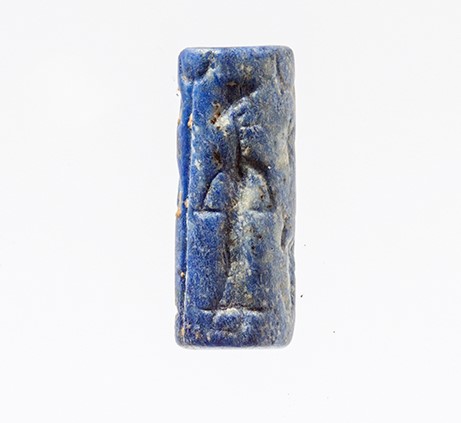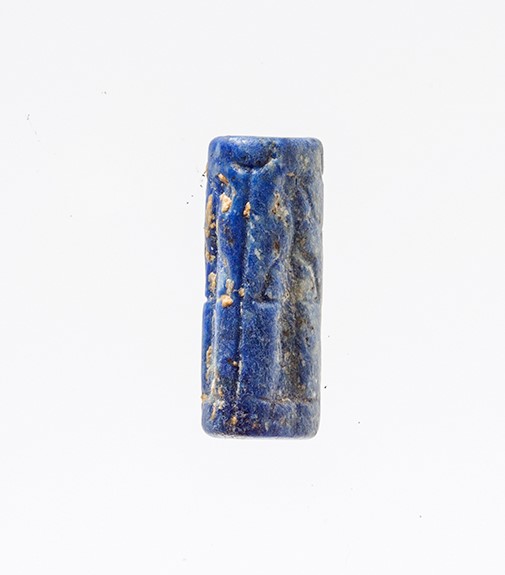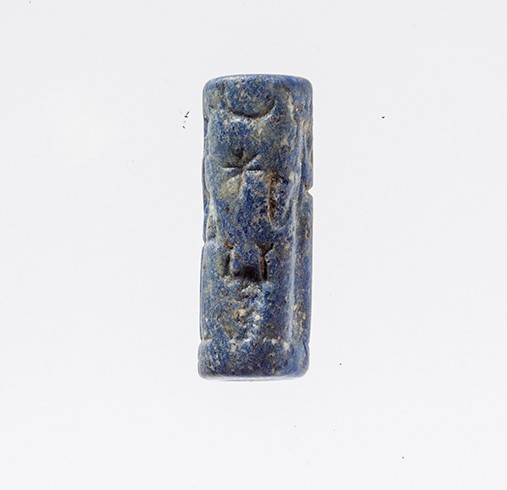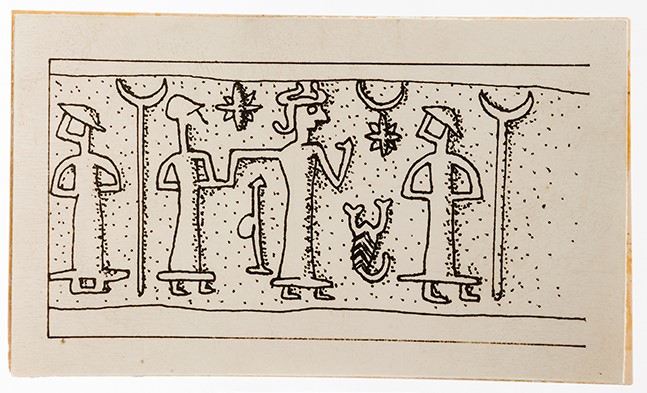Title: Cylinder Seal - 1975.16
Acquisition number: 1975.16
Author or editor: J.R. Green
Culture or period: Late Bronze Age.
Date: 1400 - 1200 BC.
Material: Stone - Lapis lazuli
Object type: Other
Dimensions: 16mm (l) × 6mm (w)
Origin region or location: Jordan
Origin city: Amman.
Display case or on loan: 1
Keywords: Late Bronze Age Temple at Amman, Cylinder Seal
J.R. Green with B. Rawson, Catalogue of Antiquities in the Australian National University, A.N.U., Canberra, 1981, 14; P.H. Merrillees, Cylinder and Stamp Seals in Australian Collections (Victoria College Archaeology Research Unit, Occasional Paper no. 3, Burwood Vic., 1990) 102-3, no. 40, pl. 18.
1975.16
Cylinder Seal
From Amman, top of wall "A" (cat.no.82). Length 1.6cm; diam. ca 0.6cm; hole 0.25cm.
Cylinder seal of lapis lazuli engraved with three standing figures: see the drawing.
Parvine H. Merrillees (see bibl.) identifies the figures as a deity or deified king on the right being approached by a goddess with her hair in a loop and wearing a single-horned crown, leading a worshipper who wears a round headdress. Between the figures are placed the ball-and-staff and scorpion; above are two stars and a crescent; at the side of the scene and serving as a divider is a crescent standard.
Merrillees gives a very useful introduction to seals of this type and a careful description of the materials and the techniques of manufacture together with full bibliography. She attributes the seal to the Isin/Larsa period dating it about the end of that period, ca 1800 B.C.; it is of provincial manufacture. She points out that the seal must have been at least 350 years old at the time of its deposition in the Amman temple and gives a number of parallels for the phenomenon. One should note that such seals were often accorded a quasi-magical significance, even into quite modern times.
See also, for parallels and further discussion, D. Collon, First Impressions. Cylinder Seals in the Ancient Near East (London 1987); ead., Catalogue of the Western Asiatic Seals in the British Museum. Cylinder Seals III. Isin/Larsa and Old Babylonian Periods (London 1986) (note p.60 and esp. nos 24-30).
J.R. Green with B. Rawson, Catalogue of Antiquities in the Australian National University, A.N.U., Canberra, 1981, 14; P.H. Merrillees, Cylinder and Stamp Seals in Australian Collections (Victoria College Archaeology Research Unit, Occasional Paper no. 3, Burwood Vic., 1990) 102-3, no. 40, pl. 18.
